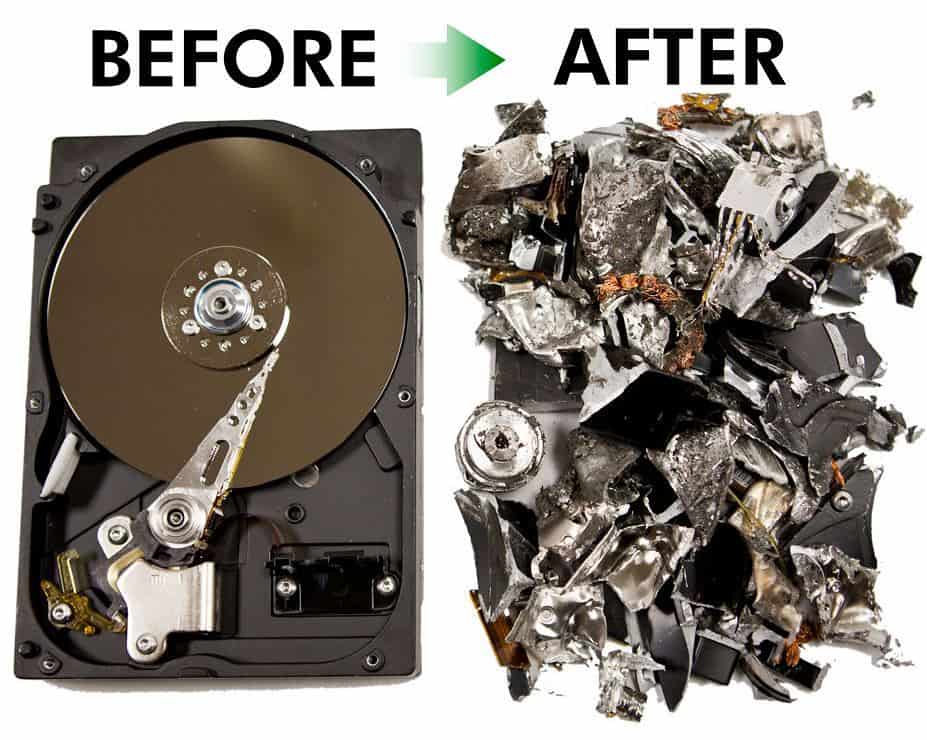The Relevance of Effective Data Devastation Practices in Shielding Sensitive Information and Ensuring Computer System Protection
In an age where data violations are significantly typical, the relevance of effective information devastation practices can not be overstated. Carrying out robust information destruction methods not only mitigates these dangers yet additionally aligns with lawful compliance needs, making certain that organizations support their online reputation and foster customer trust.
Recognizing Data Devastation
Recognizing data destruction is crucial in today's electronic landscape, where delicate info can easily be endangered. Reliable information devastation includes not simply making sure yet removing data that data is irretrievable with extensive approaches. This process is crucial for organizations that manage personal client info, intellectual property, or interior documents, as any type of breach can bring about extreme financial and reputational repercussions.
Information destruction includes various strategies, consisting of shredding physical media, degaussing magnetic storage space devices, and utilizing software-based solutions that overwrite data numerous times. Each approach serves a details function and should align with the sensitivity of the details being thrown away. Physical devastation is typically chosen for hard drives consisting of highly personal information, while software techniques could be enough for less delicate details.
Furthermore, adhering to industry criteria and policies, such as the General Data Security Regulation (GDPR) or the Wellness Insurance Mobility and Liability Act (HIPAA), is vital for conformity and to mitigate lawful dangers. Organizations has to establish a durable data destruction policy, train employees on best techniques, and on a regular basis investigate their procedures to make sure that all sensitive info is dealt with safely and efficiently.
Threats of Inadequate Practices
Inadequate data damage methods expose companies to considerable threats that can have far-ranging repercussions. When sensitive information is not effectively taken care of, it stays vulnerable to unauthorized accessibility, which can lead to data violations and identification theft. Such occurrences not only jeopardize the protection of people but also tarnish the company's online reputation, causing a loss of client count on and potential monetary effects.
Additionally, regulative conformity is increasingly rigid in many industries. Failure to follow data destruction laws can cause substantial fines and lawful actions against organizations. These fines can divert and strain monetary resources interest from core company procedures.
On top of that, the abuse of residual data can lead to copyright burglary or corporate espionage, endangering affordable benefits (data destruction). The effect of inadequate information devastation expands past instant monetary losses; it can additionally result in lasting damages to brand name integrity and market position

Organizations must recognize that data protection is not exclusively about preventing breaches; it likewise includes the accountable monitoring of data throughout its lifecycle. Neglecting efficient data devastation protocols can have catastrophic effects, underscoring the need for robust procedures to minimize these risks.
Best Practices for Data Damage
Executing reliable information devastation techniques is important for guarding sensitive information and maintaining conformity with regulative criteria. Organizations must adopt a multi-faceted strategy to ensure that data is irretrievable, thereby protecting against unapproved gain access to and prospective violations.
First, data need to be classified based upon level of sensitivity, permitting organizations to use ideal devastation techniques customized to the level of danger. For digital information, making use of software-based data-wiping tools that adhere to sector requirements can properly overwrite existing data. Physical destruction techniques, such as shredding or degaussing, are essential for gadgets that store sensitive details, making certain total obliteration.
Developing a clear data retention policy is essential, detailing how much time different sorts of information should be retained prior to damage. Routine audits of data storage space systems are likewise essential you can try this out to recognize unnecessary or outdated information requiring elimination.
Furthermore, training staff members on the importance of information destruction and the specific procedures to comply with fosters a culture of protection within the organization. Preserving documents of information damage processes gives responsibility and sustains conformity with inner plans and outside policies. By adhering to these ideal techniques, organizations can dramatically mitigate the threats connected with information exposure.
Legal and Compliance Factors To Consider
/prod01/channel_3/media/tcd/itservices/images/Untitled-design-(26).png)
Failing to adhere to these laws can result in extreme penalties, including considerable fines and reputational damage. Organizations should execute a durable data damage plan that aligns with these lawful frameworks and gives clear standards on the appropriate approaches of data disposal, whether physical shredding or electronic cleaning.
Furthermore, preserving documentation of information damage tasks is essential for showing compliance throughout audits or evaluations. By prioritizing legal and compliance factors to consider, organizations can boost their information safety and security pose and foster trust with customers and stakeholders, ultimately adding to an extra safe data monitoring environment.
Benefits of Effective Information Devastation
Reliable data devastation techniques expand beyond plain compliance; they offer substantial benefits to organizations that prioritize them. By making sure that delicate info is irretrievably damaged, companies minimize the threat of information violations and the possible monetary consequences connected with them. This positive technique not just safeguards against unapproved accessibility yet also enhances the total credibility of the company in the eyes of clients and stakeholders.
Carrying out durable information destruction techniques, such as physical devastation of storage gadgets or innovative information wiping methods, adds to the strengthening of an organization's cybersecurity pose. data destruction. It lowers the likelihood of intellectual building theft and safeguards proprietary info, thereby preserving a competitive side on the market

Verdict
Finally, reliable data devastation techniques are crucial for safeguarding delicate info and enhancing general computer safety and security. By look these up carrying out detailed methods such as software, degaussing, and shredding overwriting, organizations can alleviate the threats connected with unapproved accessibility and information violations. Adherence to governing criteria, including GDPR and HIPAA, additional enhances conformity and shields versus legal repercussions. Inevitably, a commitment to durable information destruction approaches promotes a culture of obligation, therefore reinforcing a company's cybersecurity stance and keeping customer trust fund.
